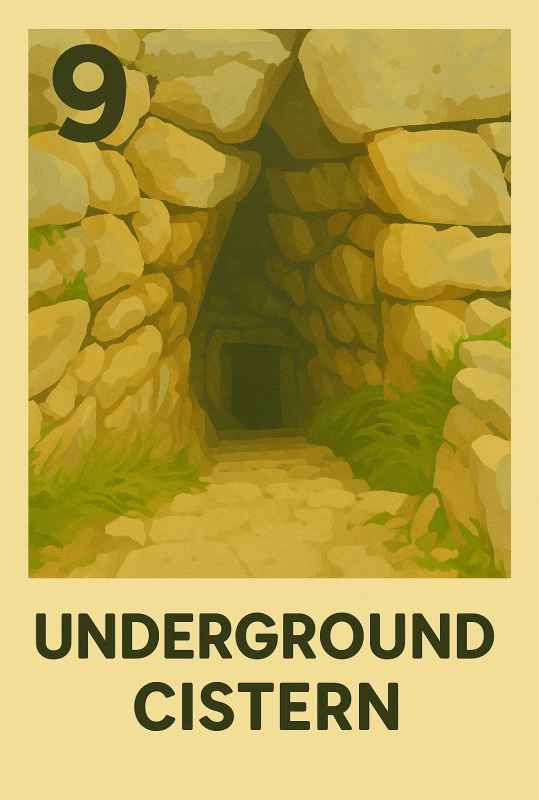
Underground cistern
Underground cistern
It dates to the late 13th century B.C.E., when the final phase of Mycenae's fortification was carried out to incorporate it. The underground cistern was built within the walls of the Mycenaean acropolis to provide water to the inhabitants when they were under siege. The water primarily came from a vital source, the Perseia Spring, which has been flowing since prehistoric times and still supplies water to the modern village. The descent into the underground cistern begins with the shape of the high-vaulted chamber leading to an entrance with lintels and a tympanum, characteristic examples of Mycenaean architecture. To reach it, one descends a staircase consisting of 3 levels
depending on the depth and direction. The vaulted cistern, 5 meters deep, has on its ceiling a vertical well with sparsely placed stones that acted as filters. Here, is the place were the underground conduit would end up, carrying water from the springs. The issue of supplying water to the acropolis of Mycenae thus found its practical solution.





